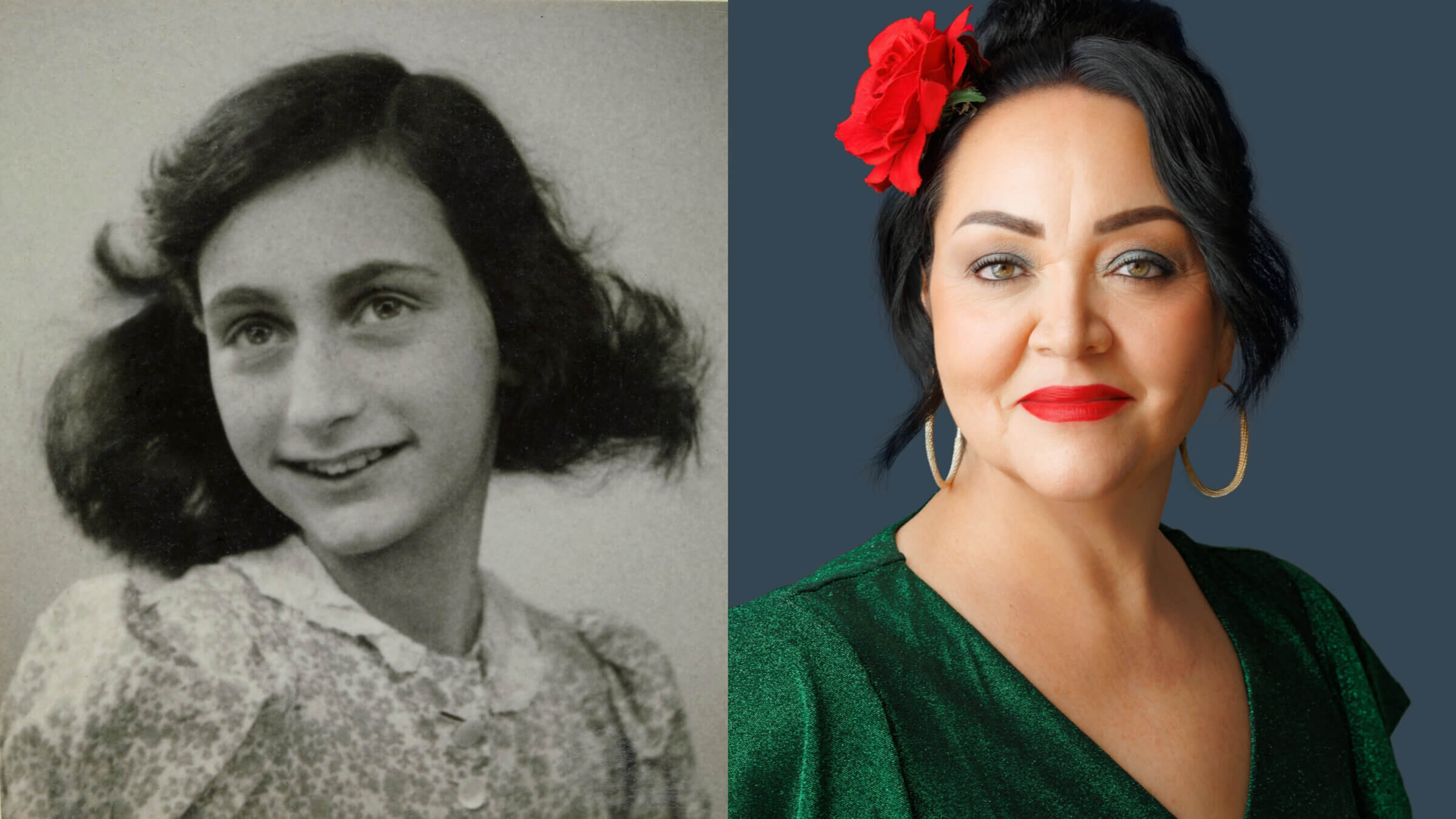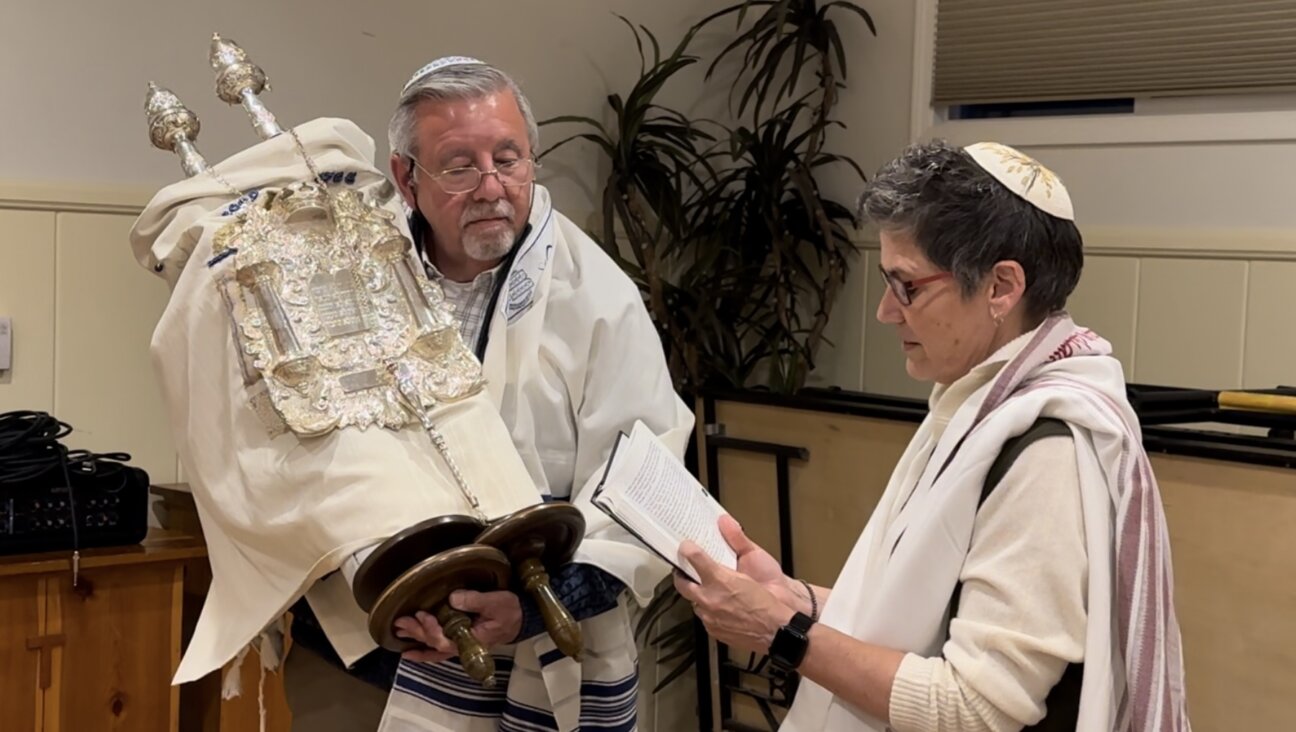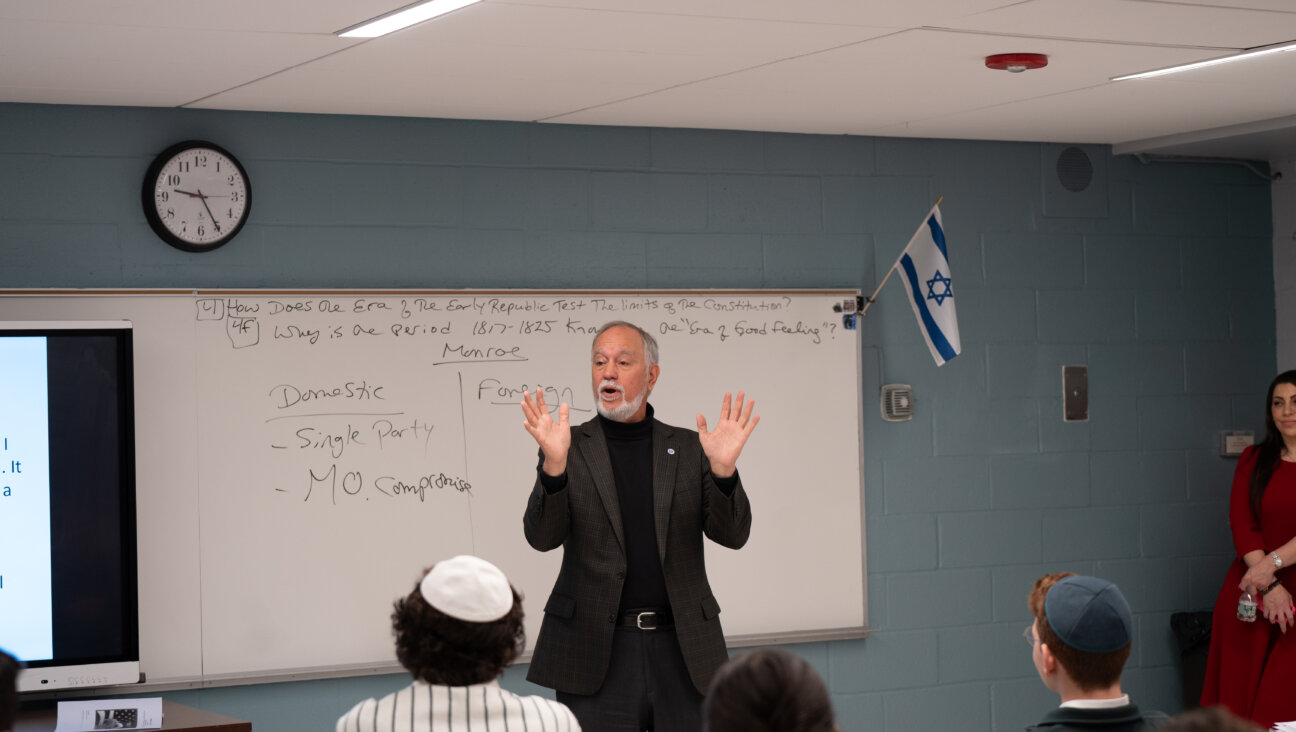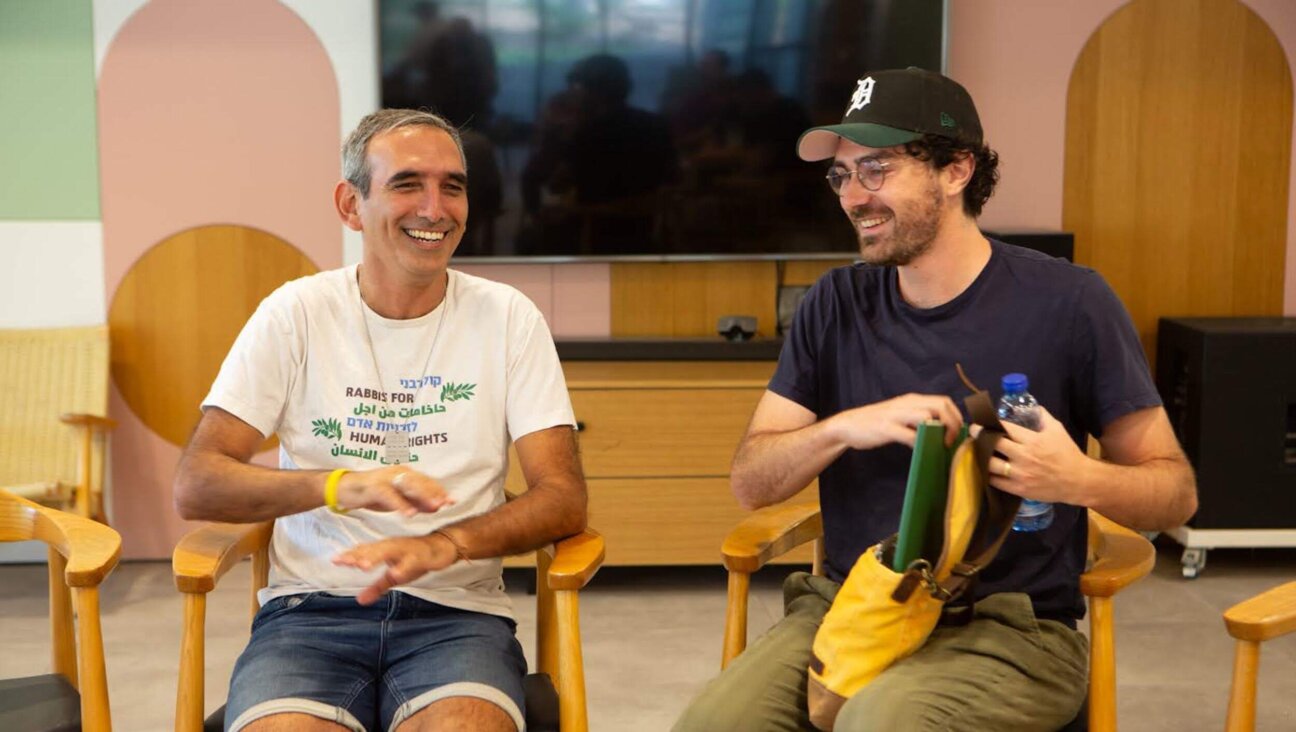How Anne Frank inspired a musical about Mexican-American immigrants
‘Real Women Have Curves’ mirrors the histories of both Mexican and Jewish women, playwright Josefina López says.

Anne Frank (left) and her diary inspired the main character in Josefina López’s play Real Women Have Curves, which is now a Broadway musical. Photo by Wikimedia Commons/Michael Roud
Picture this: A group of immigrant women is working at a sewing factory. The work before them is daunting, and there is no ventilation to escape from the heat. Frustrated by the pressures in their lives — high dressmaking quotas, men at home who demand they act as perfect daughters and wives, American society that defines a narrow beauty ideal — the women strip to their underwear and dance together as an act of defiance.
When I imagine this scene, I think about tenements in the Lower East Side, or the husks of old textile factories in Montreal. I picture Jewish women toiling in the shmata industry to make ends meet and forming unions as they weave their way into the American tapestry, stitch by stitch.
This particular scene, however, is not from Jewish history, but from Josefina López’s play Real Women Have Curves, which is now a Broadway musical. The show tells the story of a Mexican-American girl in 1980s Los Angeles who works at a sewing factory and dreams of attending college. The play is a reminder that for many women today, the exploitation, harsh labor conditions and fear associated with the American immigration experience persists — as does the resilience and camaraderie.
“Look at our humanity. Look at our joy and all that we contributed,” López, the 56-year-old playwright told me in a Zoom interview. “I feel very lucky that this story is becoming a universal story of resistance.”
The play, originally written in 1990, is based on López’s own experiences growing up as an undocumented immigrant in Boyle Heights, Los Angeles: a neighborhood with a large Chicano, or Mexican-American community.
“I really was in a sewing factory,” López said. “I really was that girl who took off her clothes because it was so hot that I didn’t care about what other people said about me.”
López’s play was adapted into a film in 2002 starring America Ferrera as Anna García. Now, López’s story is being retold again with Latin beats, hip hop and soaring pop ballads fleshing out the sounds of García’s barrio. And while López said that her story is proudly focused on the Mexican-American community, she believes that many cultures can connect to its themes.
“We’re made to feel like we don’t matter,” López said of working-class women and people of color. “And then when you share this story you realize — there’s thousands of people who have the same story.”
From Anne to Ana
Real Women Have Curves is not just reminiscent of Jewish history. It is also inspired by it.
López grew up in Boyle Heights to two parents who had immigrated from Mexico. When she was 10, she learned that she and her family were undocumented.
“My mother told me not to tell anyone that we didn’t have any papers, and I didn’t understand what that meant,” López said. “I was like, what? No toilet paper?”
She slowly came to understand that being undocumented would make her life more difficult. Her parents applied for green cards, and were denied. Her sister got into college, but couldn’t go because she didn’t have the proper documents. She started journaling to process her frustrations. When she was a teenager, López had a lesson in school that resonated.

“I went to the Los Angeles County High School for the Arts, and we read Anne Frank when I was 17,” López said. “She had this intimacy and this connection to her journal and she was able to tell the truth and question things,” she continued, “and I could identify with being afraid.”
López ultimately decided to name the main character in her play “Ana” because it was the closest Spanish language equivalent to Anne. She wanted to honor the way Frank’s story connected with her own experience as an undocumented immigrant.
“This fear of being persecuted and the fear of hiding out and being found out.” López choked up. “I think I connected to that story.”
At an early reading of the play, an actor pointed out the connection between García’s character and Anne Frank; other people saw the parallels, too. “She is my Anne Frank, just Latina,” López remembers telling him.
A neighborhood with a Jewish past
Boyle Heights, the neighborhood in which the play and musical are set, once had a thriving Jewish immigrant population that was also involved in the garment industry.
After World War I, it became one of the most popular places in the city for Jewish immigrants to settle, according to Caroline Luce, a historian who researches Jewish garment industry workers in Los Angeles. Jewish immigrants were drawn by the neighborhood’s robust hospital system and its proximity to the city. Discriminatory housing laws also made it difficult to settle elsewhere.
In the 1920s, Jews constituted around 40% of Boyle Heights, before they began moving out in the 1930s and postwar era. Jewish women worked in the garment industry alongside Spanish-speaking Mexican workers, who were often relegated to the most physically demanding jobs.
“There are women garment workers, specifically Jewish woman garment workers, calling on their comrades to be more inclusive of the dressmakers, specifically Mexican dressmakers,” Luce said.
In a famous incident, Rose Peretta, an anarchist labor organizer and Jewish immigrant from Ukraine, led a predominantly Mexican women labor force in a dressmaking strike in 1933.
“They’re like, we have Yiddish, they have Spanish, how do we make this happen?” said Luce. “So she starts organizing in Spanish…she commits to organizing Chicana[s]. And what do you know? They come out in droves.”
López admitted that she did not initially know much about the Jewish history of her neighborhood. “I only knew it as a Mexican community,” López said. But later in life, she met a Jewish student while visiting her friend at Yale who told her that her grandfather once lived in the neighborhood, which opened her eyes to how other immigrants lived in the community as well.
“ I started reading about the history of Jewish Americans, Italians, Japanese, and Russians and Armenians,” López said. “I was like, Oh my God — Boyle Heights is the Ellis Island of the West. Why isn’t anybody doing a museum?”
Bringing the barrio to Broadway
Now, more than 30 years since her play first premiered, López said she was excited to see Real Women Have Curves take on another life as a Broadway musical. López was not involved with the script, but she trusted book writer Lisa Loomer, another accomplished playwright, with adapting the material to the stage.
“The metaphor of the curve is what makes it so powerful and adaptable,” said Loomer, who wrote the book with assistance from writer Nell Benjamin and lived near Boyle Heights during the time period where the play was set. She said she saw the show’s title as emblematic of how women contend with conflict. “We don’t go straight away like an arrow in the male way; we go around the curve balls,” she said.
Loomer said that Curves was an explicitly feminist story. “I think in this time of difficulties, what you’re going to see is that women approach life’s difficulties by coming together in community and coming together in joy,” she said.
Loomer also said she hopes the musical version introduces López’s story of Mexican-American immigration to new audiences. She shared the anecdote of a woman from California who came into the show with an anti-immigrant stance but left saying she empathized with immigrants in a new way. Loomer related the experience to the Jewish concept of “Tikkun Olam.”
“In a time of great tearing apart,” Loomer said, “the experience of this show can do some repair.”
Correction: A previous version of this article stated that Real Women Have Curves was originally written in 1990. It was originally written in 1988, but it had its world premiere in 1990.
















